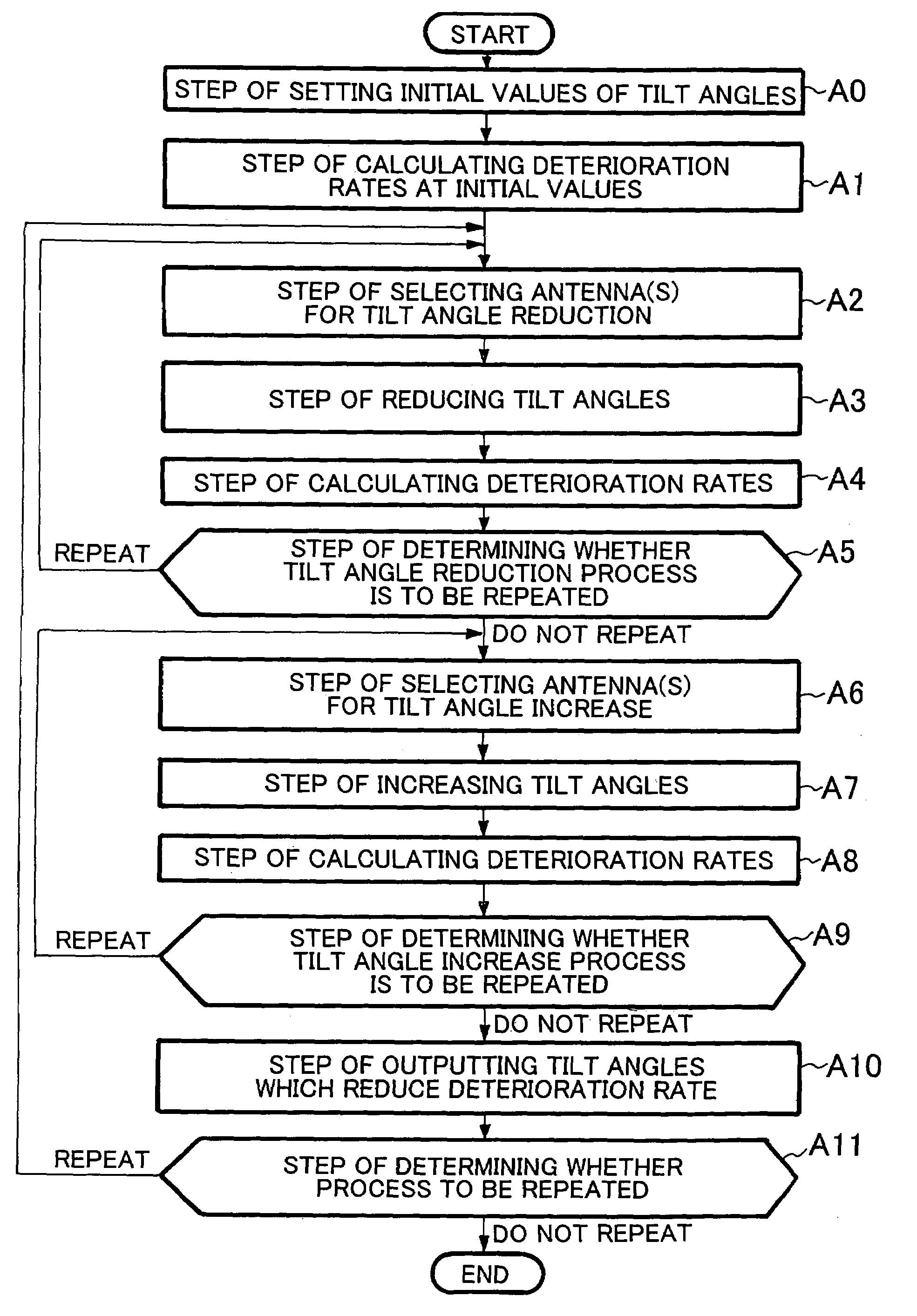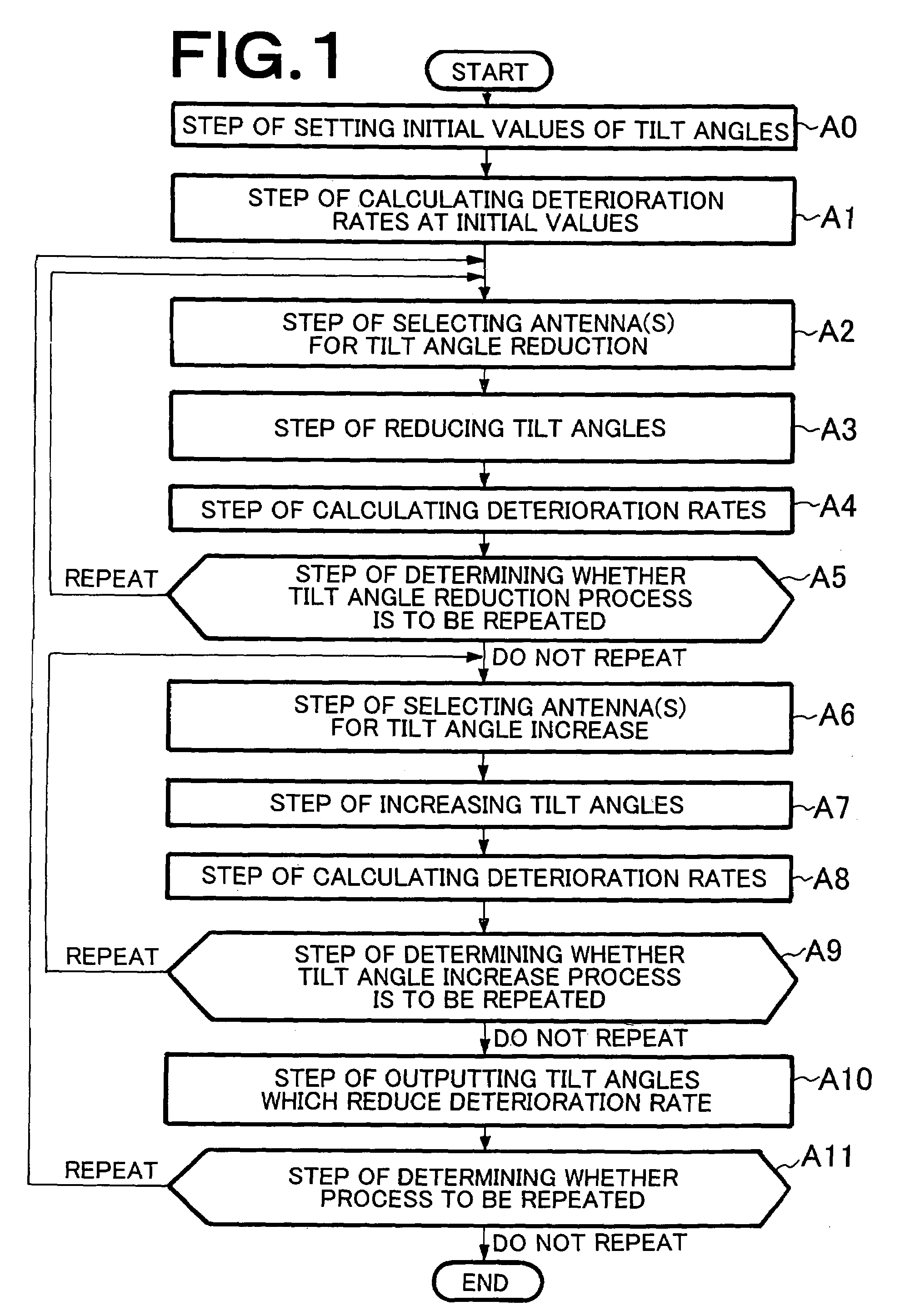Method for deciding tilt angle of antenna in radio communication system and apparatus for deciding the same
a radio communication system and antenna technology, applied in the field of radio communication systems, can solve the problems of inconsistent increased deterioration rate due to an increase in tilt angle, and large increase in so as to achieve reduce the effect of deterioration rate and small deterioration rate of the entire system
- Summary
- Abstract
- Description
- Claims
- Application Information
AI Technical Summary
Benefits of technology
Problems solved by technology
Method used
Image
Examples
first embodiment
[0048]FIG. 1 is a flowchart showing a process of a method for deciding tilt angles carried out in the present invention. This embodiment is a process carried out for deciding tilt angles of antennas in a radio communication system, like a CDMA cellular system, which includes a plurality of radio base stations, each having an antenna with directivity in a vertical plane.
[0049]A deterioration rate of each antenna is calculated by a simulator having a simulation function.
[0050]The process according to the present embodiment includes steps A0 to A11 described below.
[0051]The process includes a step of setting initial values of tilt angles (Step A0), a step of calculating a deterioration rates at the initial values of tilt angles (step A1), a step of selecting antenna(s) for tilt angle reduction based on a predetermined evaluation index (Step A2), a step of reducing tilt angles of the selected antenna(s) (Step A3), a step of calculating a deterioration rates when tilt angles are reduced ...
second embodiment
[0108]Next, the present invention is described in detail with reference to the drawings.
[0109]FIG. 3 is a flowchart showing the operations of the second embodiment of the present invention. In the present embodiment, a step of setting a parameter for tilt angle reduction (Step A12) in accordance with an accumulated number of repetitions of the entire process is added between Steps A1 and A2 in the flowchart of FIG. 1 showing the operations of the first embodiment, and a step of setting a parameter for tilt angle increase (Step A13) in accordance with an accumulated number of repetitions of the entire process is added between Steps A5 and A6 of the same.
[0110]As stated below, the step of setting a parameter for tilt angle reduction (Step A12) sets a parameter for tilt angle changes used in the step for reducing tilt angles (Step A3) in accordance with the number of times that “the entire repeated processes,” i.e. the series of Steps A12, A2, A3, A4, A5, A13, A6, A7, A8, A9, A10 and ...
PUM
 Login to View More
Login to View More Abstract
Description
Claims
Application Information
 Login to View More
Login to View More - R&D
- Intellectual Property
- Life Sciences
- Materials
- Tech Scout
- Unparalleled Data Quality
- Higher Quality Content
- 60% Fewer Hallucinations
Browse by: Latest US Patents, China's latest patents, Technical Efficacy Thesaurus, Application Domain, Technology Topic, Popular Technical Reports.
© 2025 PatSnap. All rights reserved.Legal|Privacy policy|Modern Slavery Act Transparency Statement|Sitemap|About US| Contact US: help@patsnap.com



